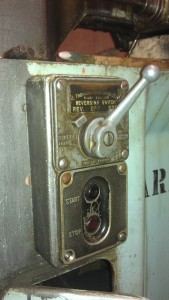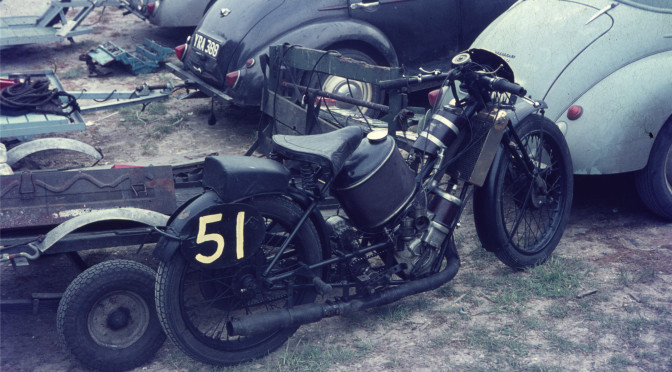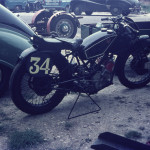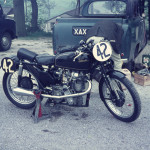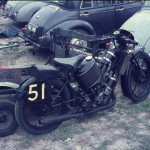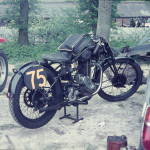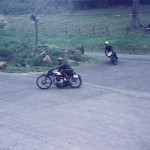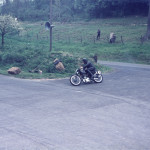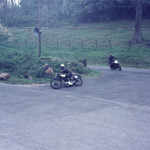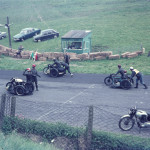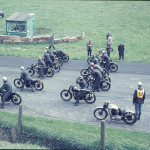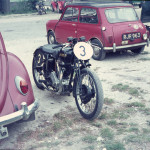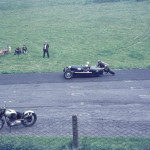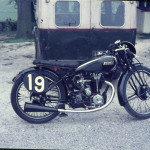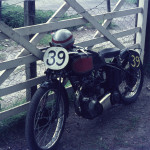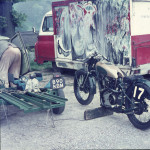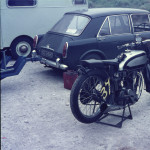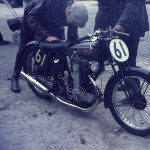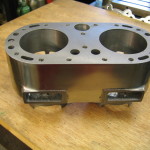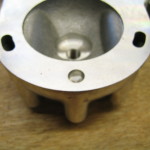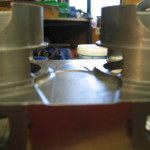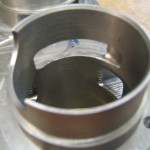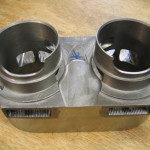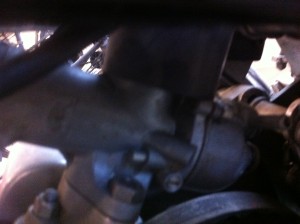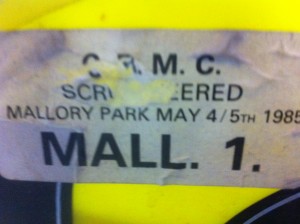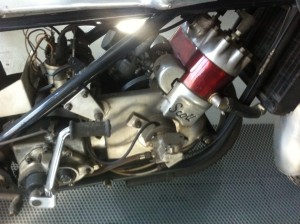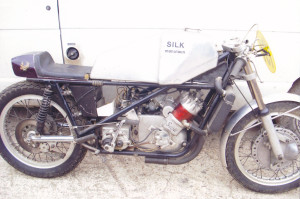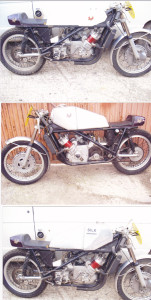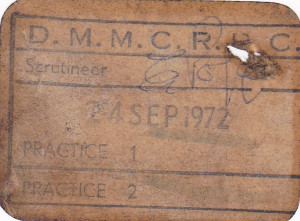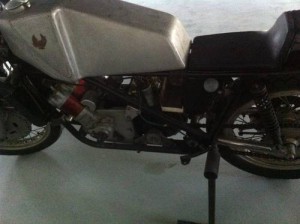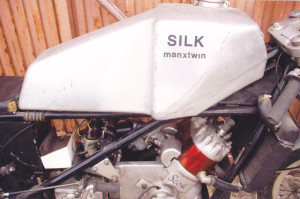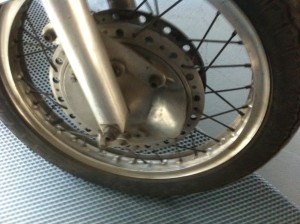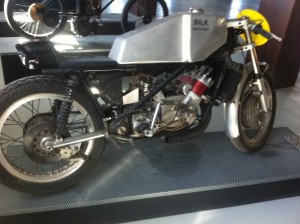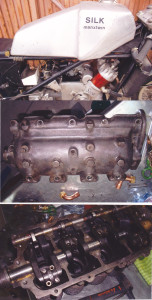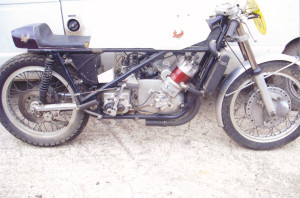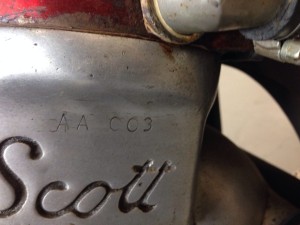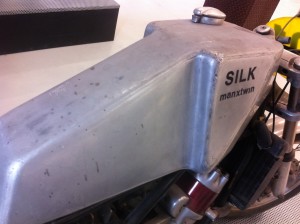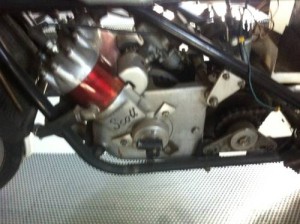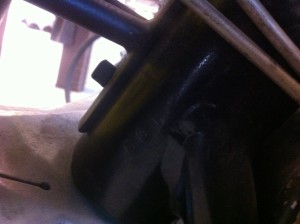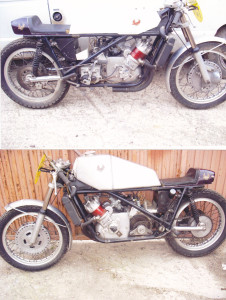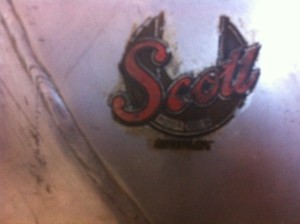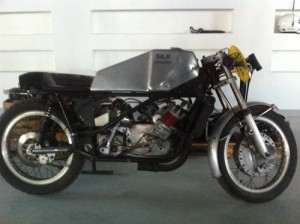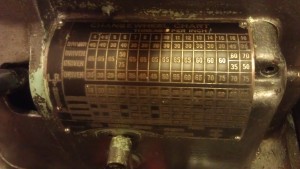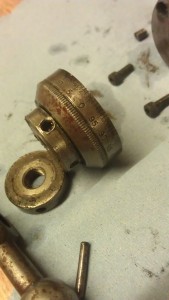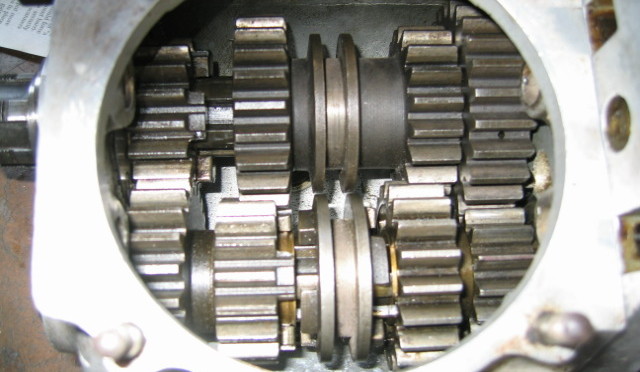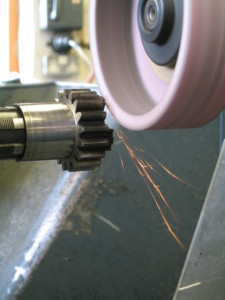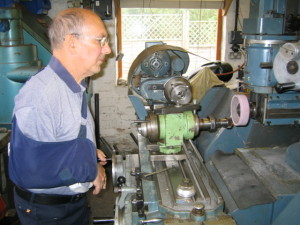I was sent a box of 35mm slides recently, taken by the sender many years before at a VMCC Cadwell meeting. He thought it was the 1970’s, but I have an idea it’s the mid to late 1960’s because of the use of pudding basins and the car registrations. I might well be wrong. I have the use of a scanner and so have digitally converted them. They are a really interesting insight into the variety of machines being used back then. I’d like to identify the machines and the riders so if anyone can help with this or any other interesting information, please let me know.
Galleries
Scott Iron barrel machining
I already posted a picture of an iron barrel my father, Roger, has been machining up from one of his castings but he’s sent me some more pictures as he’s almost finished.
In his email Roger said:
Pics depict a newly manufactured iron block showing inlet tract arrangement where it must be noted that as the “Spectacles” portion of the crankcase will be removed, then this forms the upper ceiling of an enhanced inlet tract.
Note the two 10mm counter bores which are used to enable accurate poisoning on holding fixtures during the metal cutting processes and by using ring dowels (Sleeves) to accurately position the cylinder head which also has such features.
Ports timings are more advanced than standard DPY blocks, but less than the aluminium competition blocks I make to special order which still give much improved torque at low to medium revs.
Dies and piston blanks to make 500cc pistons are currently in manufacture as are another batch of cranks comprising 15 sets of standard long stroke cranks. 5 sets of standard long stroke cranks to be fitted with Tungsten weighting slugs, and finally 5 sets of a special heavy duty crank variant for use with ball bearing main bearings and incorporating heavy metal weighting slugs. These can be used in standard cases after appropriate modification or in the Moss high duty large inlet competition crankcases.
If you are interested then contact him at Moss Engineering.
Silk Scott prototype and ‘FNT’ re-appear
FNT
In the last days I’ve been contacted by the new owners of both the Silk Scott prototype and ‘FNT’.
FNT went through a period of development which resulted in the fitment of one of the early Silk engines, Georges own, Scott based design. In the intervening years it was forced into boxes for a little while, but is now in deepest Wales and being rebuilt for use on the road. The owner confided that he had some sense of guilt about that, but the various racing focused parts will be retained for possible future use.
The Silk Scott prototype
It appears that the Silk Scott prototype machine is in Spain now and seems to have remained largely unchanged. The owners have a collection of all manner of period literature and photographs which document its previous life and the Manx GP race in the hands of Stuart Hicken, who is now part of the management of Mallory park.
The machine is for sale on ‘Car and Classic’ for £25,000. I’m not running a classified section, but I thought it was very interesting to see all the photos and documentation that they sent me and I thought that others may enjoy it too.
As well as the images, the owner also sent a number of scans of period reports of the Silk Scott’s TT adventure, as well as other relevant information.
Picture of bike… probably Stanford Hall
Report on the 1972 Manx Grand Prix
Image of print made of Silk Scott
Picture of Stuart Hicken riding prototype in Manx GP
Silk Scott Manx Entry write up
Various credits for above need to go to Old bike Mart, Yowl and maybe elsewhere.
Lathe inspection begins
Well, It has not been sitting in the corner of someones de-humidified workshop for 60 years with a dustcover on.
The cross slide and compound slide both had a bucketful of backlash, so I took them off last night to check out the leadscrews and nuts. I’ve stripped the cross slide completely and the leadscrew was pretty badly worn, with some damage which actually chased out the brass nut. 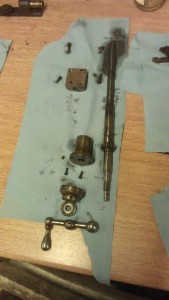
The next thing to do is to take the saddle off and look at the underneath. 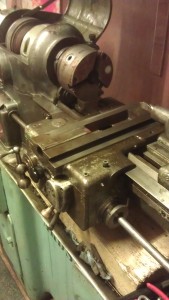
Also I’ve found that the brass helical back gear drive from the main spindle is badly worn, but it might be ok. Wonder what the spares situation would be for that?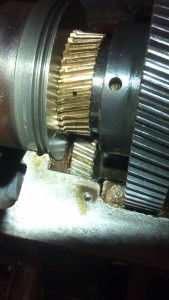
The more I look at this lathe, the more I like it. The details are superb.
